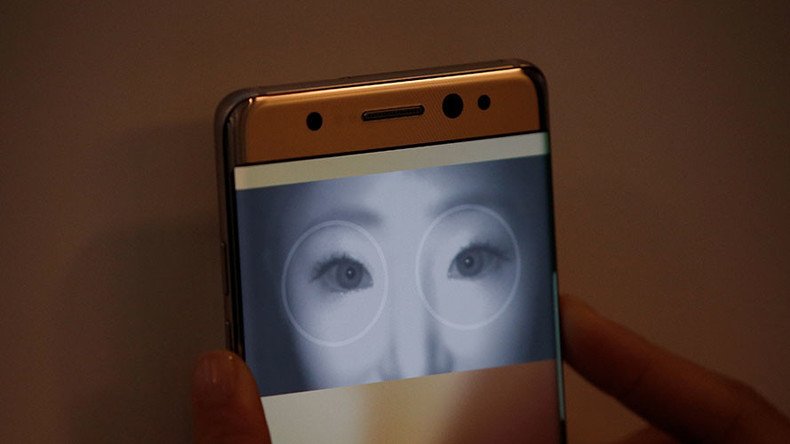‘Anti-drone’ burqa designer unveils camouflage clothing project to dupe facial recognition (VIDEO)

A Berlin artist heading a project to trick facial recognition through fashion, has said the increased use of such tools to profile people on physical traits reminds him of eugenics.
Adam Harvey, in collaboration with New York studio Hyphen Labs, has put forward a way to throw off facial recognition with specially designed clothing and textiles.
The project, dubbed Hyperface, has been described as a “new kind of camouflage” to reduce the confidence score of facial detection.
Basically, Hyperface operates in an ‘I’m Spartacus’ way, in that instead of concealing your face, it overloads facial recognition programmes with multiple false faces through patterns printed on clothing.
Introducing the concept at a conference in Germany, Harvey said: “As I’ve looked at in an earlier project, you can change the way that you appear.”
He explained that Hyperface involved the creation of textile patterns that “oversaturated an area with faces to divert the gaze of a computer recognition algorithm.
“It could be used to hopefully modify the environment around you, whether it is somebody next to you, whether you’re wearing it.”
Harvey recently spoke about Hyperface at the Chaos Communication Congress in Hamburg, Germany.
READ MORE: Half of Americans in ‘virtual lineup’ face-recognition police programs - study
Listing “crazy” ways in which facial detection tools are being developed to profile people, he said:
“What all this reminds me of is of Francis Galton and eugenics. Who the real criminal in these cases would be the people who are perpetrating this idea and not the people who are being looked at.”
During the talk based on “hyper-competitive retail surveillance”, the designer outlined how Hyperface aimed to add to the discourse on facial recognition technology while also altering its success rate.
Through another project known as CV Dazzle, named after a WWI camouflage tactic for warships, Harvey previously used hairstyles and patterned facial designs to exploit vulnerabilities in facial recognition technology.
Stealth Wear Aims to Make a Tech Statement http://t.co/kXGFUJIJ2k
— Air Force GC (@AirForceGC) July 1, 2013
“By doing hair and makeup in a certain location you decrease the confidence score that [your] face would appear [on a recognition program],” he explained to the audience at the Chaos Communication Congress.
Stealth Wear and Make-up as anti face-detection algorithm and anti-thermal detection cameras pic.twitter.com/bOQH2PgMpx
— Fabio Pietrosanti (@fpietrosanti) December 30, 2016
Harvey’s other ‘Stealth Wear’ garbs, designed to block thermal imaging, included an ‘anti-drone’ burqa lined with silver plated material to cloak heat radiation.
“This is more of the Harry Potter invisibility cloak kind of technology,” Harvey said at the December event in Germany.
READ MORE: Germany drafts law to install face-recognition cameras in public places - media leaks
“It’s a silver plated metal fabric fashioned in Islamic dress as a anti-drone hijab and an anti-drone burqa.”
“The idea of the burqa is that it is reinterpreting religious dress in an era of mass surveillance to create a separation between man and drone.”
The $2,500 piece was designed in partnership with Johanna Bloomfield, according to Harvey’s Privacy Gift Shop website.












